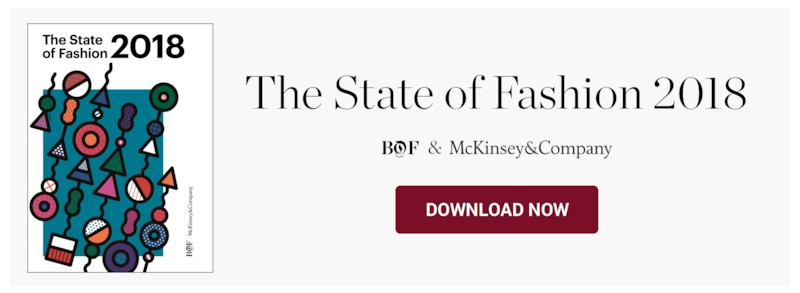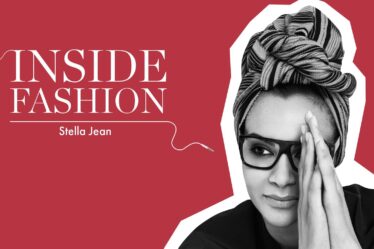
Discover the latest version of The State of Fashion and view all previous editions of the report here — our annual in-depth report on the future of the fashion, beauty and luxury industries, produced in partnership with McKinsey & Company.
The fashion industry is turning a corner. Looking towards 2018, there is a new sense of optimism in an industry plagued by uncertainty. And while “uncertain” and “challenging” remain the most common words that executives in the BoF-McKinsey Global Fashion Survey have used to describe the state of the industry this year, right behind them in third place is “optimism.”
The McKinsey Global Fashion Index forecasts industry sales growth to nearly triple between 2016 and 2018, from 1.5 percent to between 3.5 to 4.5 percent. But the rebound is not being felt evenly across the globe. In fact, 2017 signals the end of an era. The West will no longer be the global stronghold for fashion sales. In 2018, an important tipping point will be reached when, for the first time, more than half of apparel and footwear sales will originate outside of Europe and North America, as the main sources of growth are emerging market countries across Asia-Pacific, Latin America and other regions. Not surprisingly, this is also reflected in fashion executives’ sentiments, as respondents from emerging markets are more optimistic about the industry’s outlook in 2018.
This outlook varies across value segments too. The ongoing polarisation of the industry with consumers trading up or down from mid-market price points continues to create headwinds for mid-priced fashion players while those operating in the luxury, value and discount segments further pick up speed. What is new is that the absolute luxury segment is accelerating alongside affordable luxury.
These developments take place at the same time as the fashion industry is undergoing other transformative shifts. Alongside consumers’ adoption of digital are raised expectations of customer experience and a higher scrutiny on convenience, price, quality, newness and a personal touch. Leading players are therefore creating innovative business models, using granular customer insights as a source of differentiation and pushing the limits of their end-to-end product development process. The performance gap between frontrunners and laggards continues to widen: from 2005 to 2015 the top 20 percent of fashion companies contributed 100 percent of the economic profit, while in 2016 the top 20 percent contribution had increased to 144 percent.
The challenges of operating in a fundamentally changing industry and an unpredictable macroeconomic environment has led fashion players to “toughen up.” Industry players are coming to accept unpredictability as the new normal, and fashion executives will respond by focusing their energy on improving what is within their control. We expect to see several themes emerge as defining features of 2018, from Asian fashion players asserting their power on the global stage to personalisation at scale and cutting-edge deployment of artificial intelligence. For those leaning forward and willing to help design the new features of the modern fashion system, the opportunities at hand to truly connect with fashion consumers across the globe have never been greater.



